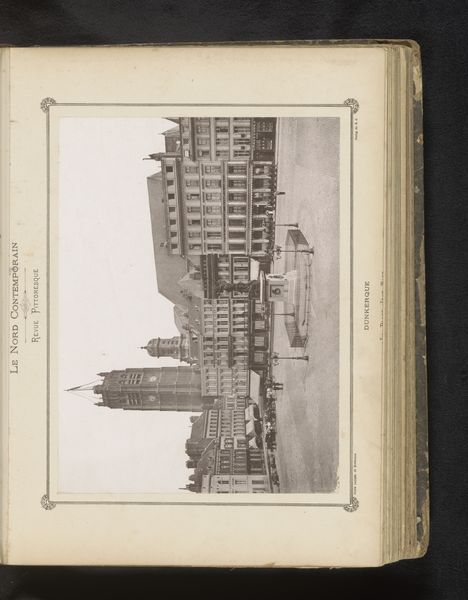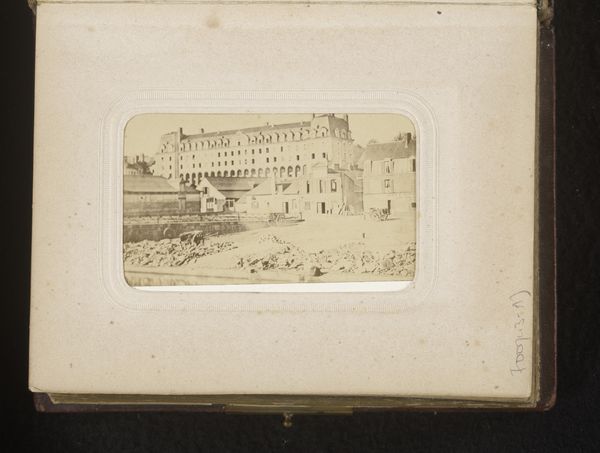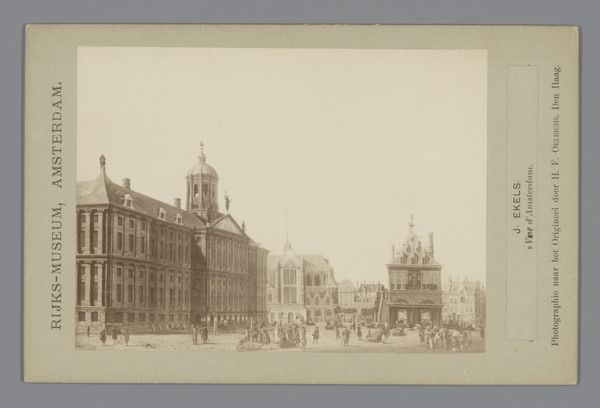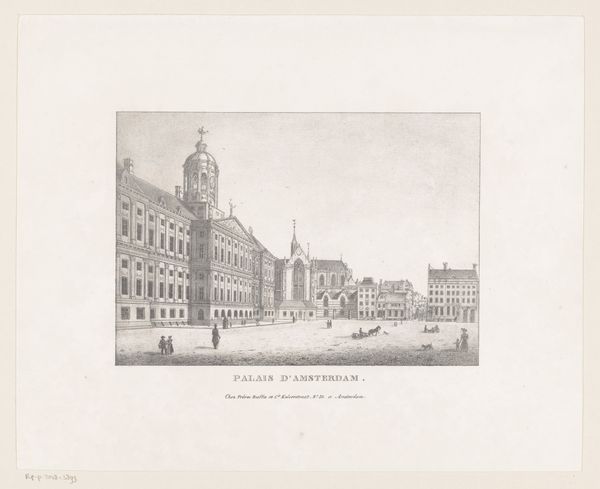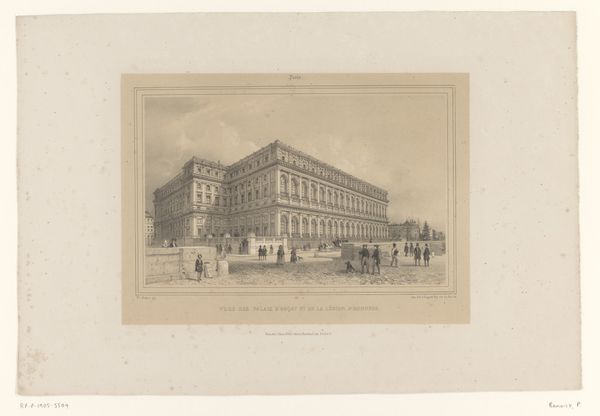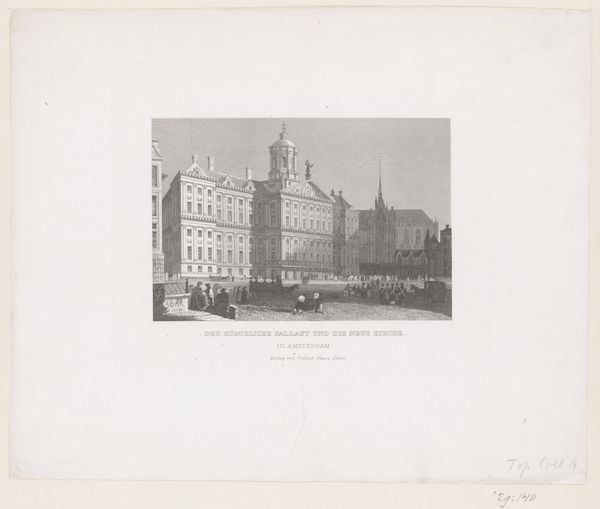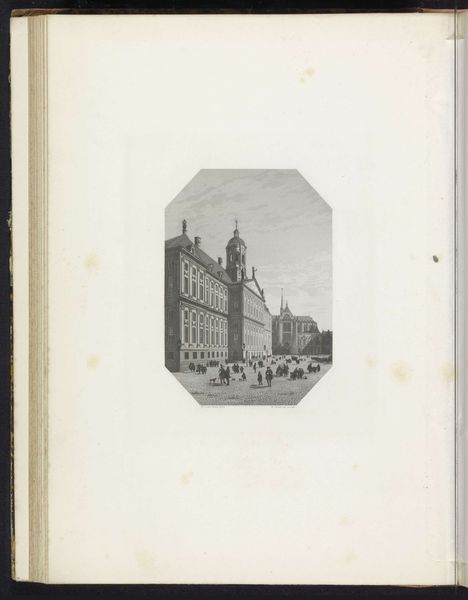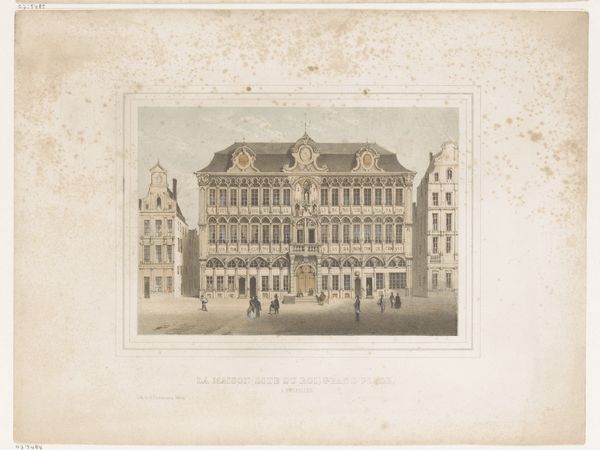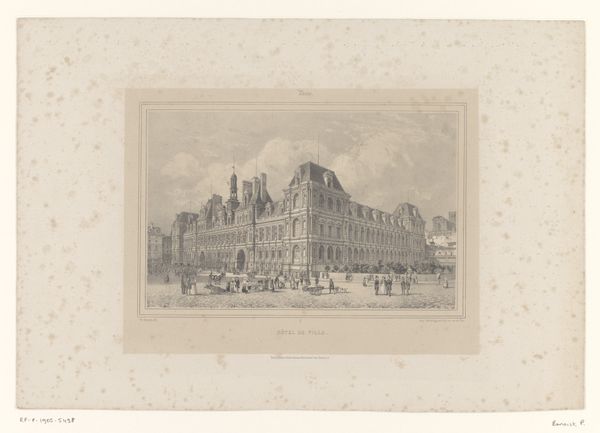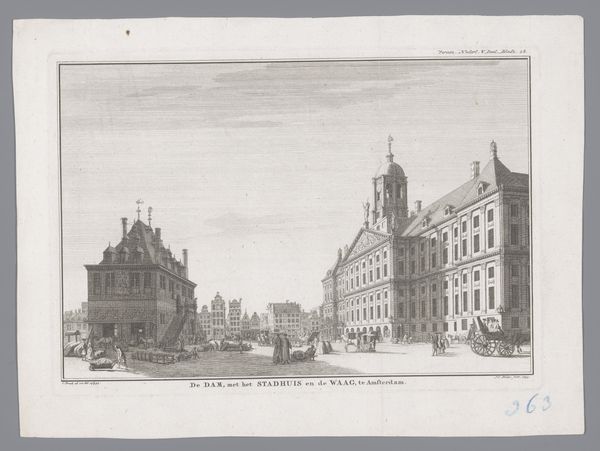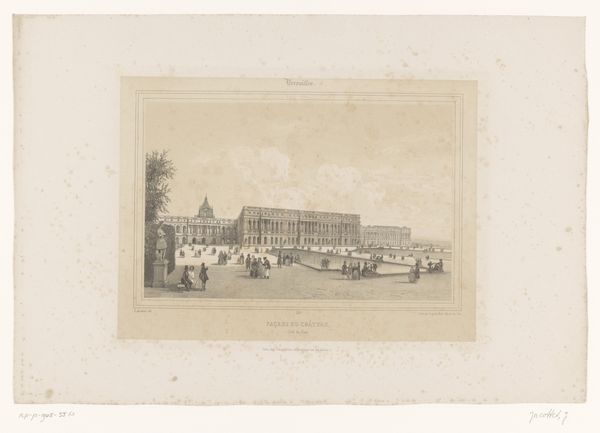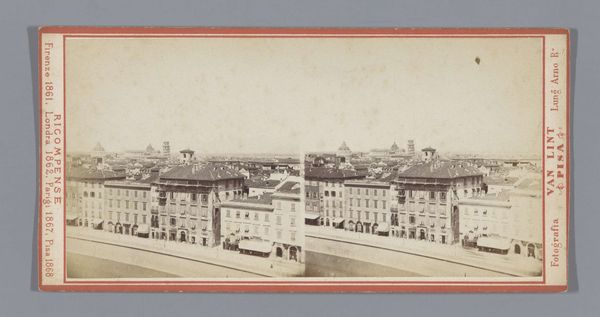
Dimensions: height 270 mm, width 365 mm
Copyright: Rijks Museum: Open Domain
Curator: Here we have "Dam in Amsterdam" by Johannes Hilverdink, a print made sometime between 1847 and 1863, currently held at the Rijksmuseum. What strikes you first about it? Editor: It’s delicate, almost ethereal. The meticulous lines of the engraving create a sense of vastness, but the overall impression is muted, serene. The tonality contributes to a powerful, subdued mood. Curator: Indeed. Consider the spatial relationships Hilverdink establishes. The Dam Square is meticulously rendered with linear perspective. The buildings anchor the scene, and then the monument—a symbolic core amidst the activity. What do you interpret that monument to signify within this context? Editor: The monument, given its centrality, appears to me to symbolize civic pride or perhaps national identity, a focal point around which the daily life of Amsterdam unfolds. Look at all of the people—they are not just a visual texture, but living elements who suggest commerce, recreation, ceremony; humanity thriving beneath imposing structures of governance and faith. Curator: That reading aligns perfectly with Romantic ideals, a common theme throughout Hilverdink’s works. This approach blends the idealized past with the observable present. In the print, one notices precise symmetry; even with all the activity, there’s a careful distribution of elements. Editor: But beyond the technical mastery, I see it offering viewers a connection to a specific time. Each figure seems caught in a moment, yet frozen for eternity. This becomes more potent when understanding that similar city squares continue functioning throughout political and social changes; that continuous human story unfolds against these same imposing structures that frame Amsterdam’s evolution. Curator: The engraving medium lends itself to that feeling of enduring permanence you observe, that feeling that the scene has been carved into something which can be enjoyed centuries into the future. These qualities underscore his artistic talent, his mastery of depth and texture given his tools and era. Editor: Ultimately, this visual encoding shows how Amsterdam situates herself through both cultural memory and aspirations for her future. Hilverdink uses symbolic language and emotional tenor to tell the continuing narrative of this impressive locale. Curator: A splendid reminder that every mark on paper holds stories deeper than meets the casual glance. Editor: It seems Hilverdink was striving to capture Amsterdam’s soul in visual form.
Comments
No comments
Be the first to comment and join the conversation on the ultimate creative platform.
